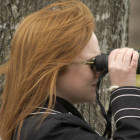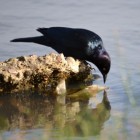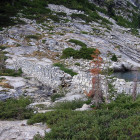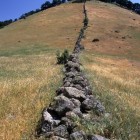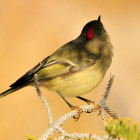
This is the second in a multipart series introducing birds typically found in valley and foothill areas of Northern California. The following “bird bios” describe birds you’re likely to see in heavily wooded areas and woodsy edges, such as in and near Lower Bidwell Park in Chico. These brief descriptions are excerpted from The Birds of Bidwell Park, a handy field guide that offers many more details, as well as finely drawn illustrations by Carol Burr, to help you identify regional birds. At last report the book was available in Chico at Bird in Hand, Made in Chico, C Bar D Feed Store, and ABC Books (next to La Comida). —Editor
Roger Lederer, Professor Emeritus of Biological Sciences at CSU, Chico, has birdwatched in more than 90 countries. Continue Reading →

